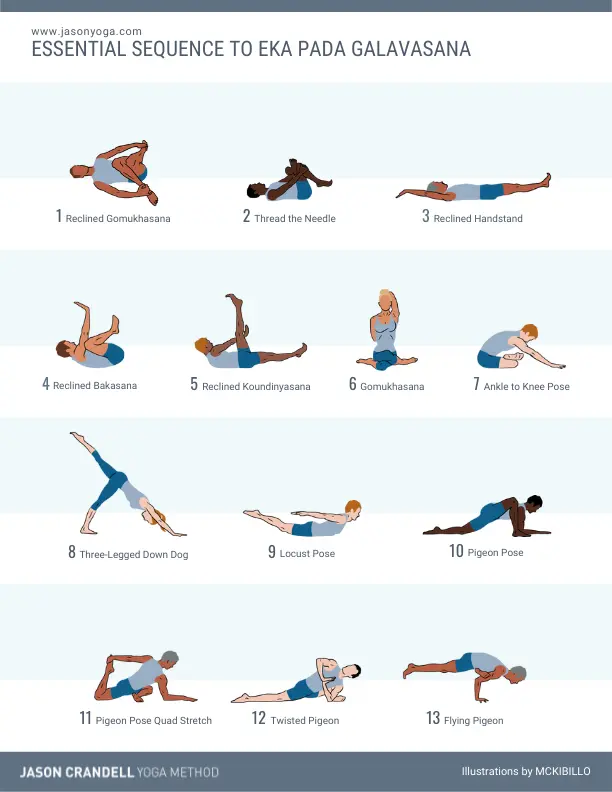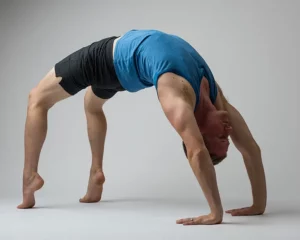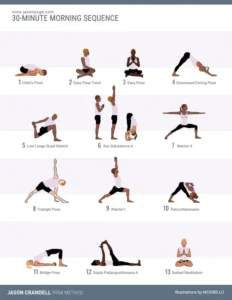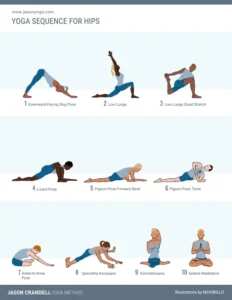WHY THIS EKA PADA GALAVASANA SEQUENCE WORKS
Eka Pada Galavasana is not an easy posture, but it’s a simple posture. If you take a step back and look at the pose, you’ll see it’s a combination of Pigeon Pose and Chaturanga Dandasana. Even more precisely, it’s Pigeon Pose on top of Chaturanga.
This means that there’s no mystery when it comes to sequencing for Eka Pada Galavasana: Your job is to prepare yourself (or your students) for a solid, skillful Chaturanga and a spacious, supple Pigeon Pose.
This sequence does this by focusing on core strength, upper body strength, and outer hip flexibility. Here’s a detailed look at the method behind the sequence:
POSES 1 & 2
I start a ton of sequences on my back. This is a reflection of my personal practice which almost invariably commences with me laying on the floor—especially if I know that I’m going to work hard later in the sequence. It’s an incredibly effective, low energy way to create mobility in the hips, hamstrings, and spine. The first two postures provide good bang for your buck. They require very little effort yet produce enough leverage to chip away at hip tension.
POSES 3 – 5
Not everything you practice on your back is effortless. This combination of reclined arm balances will wake up your core, get your blood moving, and heat your body in very little time.
POSES 6 & 7
Now that your body is a little warmer after your reclined arm balances, it’s time to dig into your hips a little deeper. Postures 6 and 7 warm up your body for the even deeper outer hip openers that directly precede the final pose.
POSTURES 8 & 9
I wrote earlier that Eka Pada Galavasana was a combination of Pigeon and Chaturanga. I’m sticking with this assessment, but there’s an important nuance that postures 8 & 9 address. Neither Pigeon nor Chaturanga require significant engagement of your hamstrings or spinal muscles, but, Eka Pada Galavasana does. Your hamstrings and spinal muscles help elevate your back leg in Eka Pada Galavasana–this isn’t required in Pigeon or Chaturanga. Postures 8 & 9 help integrate these muscles into your overall body awareness so that you’re ready to use them in the upcoming arm balance.
POSTURES 10 – 13 (Moving into Eka Pada Galavasana)
These last few poses are deep outer hip openers. If your hips are too tight for the final pose, practice the hip openers in this sequence more consistently.
If you can get into the shape of the final pose, but struggle to straigthen and lift your back leg, work on core, upper-body, and spinal strength. Good luck!
{illustrations by MCKIBILLO}
Want more sequences by Jason?
Sign up to join our newsletter and we’ll send you our e-book:
30 Essential Home Practice Sequences.



